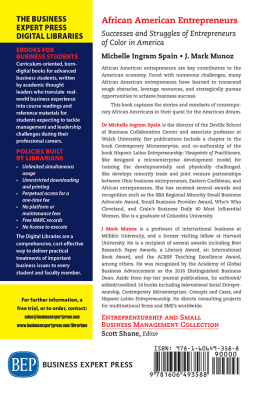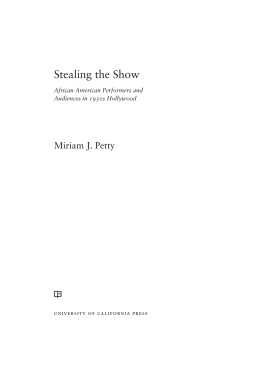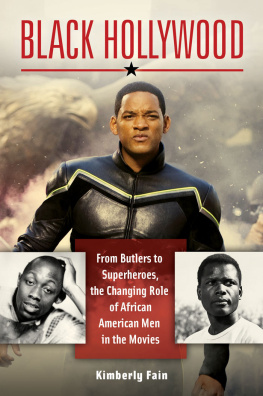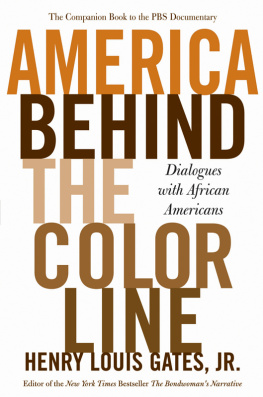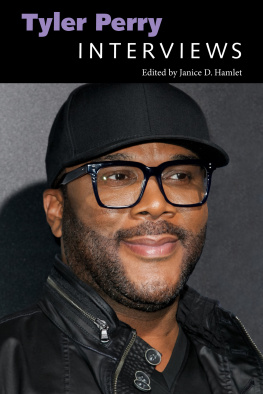Published in 2018 by
Lucent Press, an Imprint of Greenhaven Publishing, LLC
353 3rd Avenue
Suite 255
New York, NY 10010
Copyright 2018 Greenhaven Press, a part of Gale, Cengage Learning
Gale and Greenhaven Press are registered trademarks used herein under license.
All new materials copyright 2018 Lucent Press, an Imprint of Greenhaven Publishing, LLC.
All rights reserved. No part of this book may be reproduced in any form without permission in writing from the publisher, except by a reviewer.
Designer: Deanna Paternostro
Editor: Siyavush Saidian
Cataloging-in-Publication Data
Names: Michaels, Camille R.
Title: African Americans in film: issues of race in Hollywood / Camille R. Michaels.
Description: New York : Lucent Press, 2018. | Series: Lucent library of black history | Includes index.
Identifiers: ISBN 9781534560819 (library bound) | ISBN 9781534560826 (ebook)
Subjects: LCSH: African Americans in motion pictures--Juvenile literature. | African Americans in the motion picture industry--Juvenile literature. | Race in motion pictures.
Classification: LCC PN1995.9.N4 M53 2018 | DDC 791.43652996073--dc23
Printed in the United States of America
CPSIA compliance information: Batch #BS17KL: For further information contact Greenhaven Publishing LLC, New York, New York at 1-844-317-7404.
Please visit our website, www.greenhavenpublishing.com. For a free color catalog of all our high-quality books, call toll free 1-844-317-7404 or fax 1-844-317-7405.
CONTENTS
Foreword
Setting the Scene: A Timeline
Introduction:
Prejudicial Portrayals
Chapter One:
Silent Movies, Loud Impact
Chapter Two:
The Rise of African Americans in Hollywood
Chapter Three:
Still Serving on Screen
Chapter Four:
The Film Industry and World War II
Chapter Five:
Civil Rights and Hollywood Profits
Chapter Six:
A New Era of Films
Chapter Seven:
Spike Lee and a New Wave of Motion Pictures
Chapter Eight:
The 2000s and Beyond
Notes
For More Information
Index
Picture Credits
About the Author
FOREWORD
B lack men and women in the United States have become successful in every field, but they have faced incredible challenges while striving for that success. They have overcome racial barriers, violent prejudice, and hostility on every side, all while continuing to advance technology, literature, the arts, and much more.
From medicine and law to sports and literature, African Americans have come to excel in every industry. However, the story of African Americans has often been one of prejudice and persecution. More than 300 years ago, Africans were taken in chains from their home and enslaved to work for the earliest American settlers. They suffered for more than two centuries under the brutal oppression of their owners, until the outbreak of the American Civil War in 1861. After the dust settled four years later and thousands of Americansboth black and whitehad died in combat, slavery in the United States had been legally abolished. By the turn of the 20th century, with the help of the 13th, 14th, and 15th Amendments to the U.S. Constitution, African American men had finally won significant battles for the basic rights of citizenship. Then, with the passage of the groundbreaking Civil Rights Act of 1964, many people of all races began to believe that America was finally ready to start moving toward a more equal future.
These triumphs of human equality were achieved with help from brave social activists such as Frederick Douglass, Martin Luther King Jr., and Maya Angelou. They all experienced racial prejudice in their lifetimes and fought by writing, speaking, and peacefully acting against it. By exposing the suffering of the black community, they brought the United States together to try and remedy centuries worth of wrongdoing. Today, it is important to learn about the history of African Americans and their experiences in modern America in order to work toward healing the divide that still exists in the United States. This series aims to give readers a deeper appreciation for and understanding of a part of the American story that is often left untold.
Even before the legal emancipation of slaves, black culture was thriving despite many attempts to suppress it. From the 1600s to 1800s, African Americans were developing their own cultural perspective. From music, to language, to art, slaves began cultivating an identity that was completely unique. Soon after these slaves were granted citizenship and were integrated into American society, African American culture burst into the mainstream. New generations of authors, scholars, painters, and singers were born, and they spread an appreciation for black culture across America and the entire world. Studying the contributions of these talented individuals fosters a sense of optimism. Despite the cruel treatment and racist attitudes they faced, these men and women never gave up, changing the world with their determination and unique voice. Discovering the triumphs and tragedies of the oppressed allows readers to gain a clearer picture of American history and American cultural identity.
Here to help young readers with this discovery, this series offers a glimpse into the lives and accomplishments of some of the most important and influential African Americans across historical time periods. Titles examine primary source documents and quotes from contemporary thinkers and observers to provide a full and nuanced learning experience for readers. With thoroughly researched text, unique sidebars, and a carefully selected bibliography for further research, this series is an invaluable resource for young scholars. Moreover, it does not shy away from reconciling the brutality of the past with a sense of hopefulness for the future. This series provides critical tools for understanding more about how black history is a vital part of American history.
SETTING THE SCENE: A TIMELINE
INTRODUCTION
PREJUDICIAL PORTRAYALS
I n the 21st century, movies are a worldwide social fixture, with thousands released each year that generate billions of dollars worth of revenue. However, they were once a unique and revolutionary method of entertainment. In the early 1900s, motion pictures were starting to spread across America and some European countries, and millions of people were shocked by what they could see on a movie screen. Through movies, they could experience storytelling in a completely new way. Movies set in faraway places gave people a glimpse of what life was like across the globeand even if that vision was stereotyped or not accurate, movies became the source of many peoples beliefs.
In the United States, some films made in the early 20th century had black characters or showed black culture. Because a large majority of American citizens were white, and slavery was still in living memory, few people had ever been exposed to black culture outside of films. This was because most black people lived in the rural South in the late 1800s. At the turn of the 20th century, however, millions of black people began moving toward urban, instead of rural, city centers on the East Coast. In these cities, such as New York and Boston, black culture thrived. Despite this migration, millions of white Americans, particularly in the Midwest and the Great Plains regions, had never met a black person. As a result, this huge portion of the populace based their understanding of black culture entirely on what they saw in the movies.



